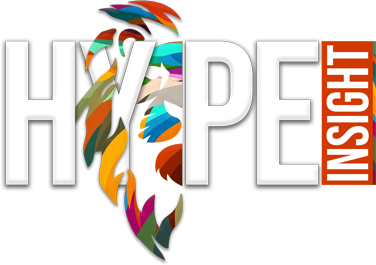In the competitive skies of air travel, Spirit Airlines has long been the punchline for jokes about cramped seats and minimal amenities. For years, it was the airline you loved to hate—the quintessential example of budget travel gone too far.
But Spirit is rewriting its story now, and right at the core of this rewrite is a creative, human-centered marketing campaign. It’s proof that even the most faltering brand can change course, revitalize its reputation, and inspire both customers and advertising.
The art of turning bankruptcy into a fresh start
Picture this: November rolls around, and Spirit Airlines files for bankruptcy. For any other business, this would have marked the beginning of the end. To Spirit, it was a turning point and its chance to start all over again. “More Fly” is a brand platform to fundamentally redefine an airline’s reputation, rather than only rebuilding it.
The campaign centers on new premium options like blocked middle seats and larger front seats—features that bring an unexpected touch of comfort to the budget airline experience. It’s not luxury by any means, but it’s a small leap that feels big when you’re used to minimal legroom and no-frills service. And that’s the genius of Spirit’s approach: it knows its audience. These aren’t travelers who expect champagne and caviar; they’re value-seekers who still want a little elbow room.
From “Malcolm in the Middle” to “not in the middle”
This isn’t Spirit’s first attempt to lighten its image. Last year, the airline launched its “#NotInTheMiddle” campaign, which cheekily played on actor Frankie Muniz’s sitcom past to promote the idea of sitting comfortably with a blocked middle seat. It was a clever way to get people talking, but “More Fly” takes it a step further. Instead of relying on celebrity nostalgia, this new effort focuses on the traveler’s journey—the relaxed vacationer who finally gets to stretch out a bit, both literally and metaphorically.
The ads themselves are simple yet effective. In one, a passenger reclines in a roomy seat, a blissful smile on his face. Another shows the elbows of a tourist, effortlessly avoiding an empty middle seat, hinting at an upcoming holiday. Encased in the prospect of a reasonably priced ticket, they are relatable, aspirational moments-subtle yet powerful, speaking directly to the consumer’s travel fantasies.
Why this matters for brands and entrepreneurs
The story of Spirit is less an airline rebirth than it is a masterwork of brand reinvention. Here are a few critical pieces for anyone trying to start something from scratch or breathe life into a struggling business:
- Start where it hurts: Spirit didn’t shy away from its weaknesses. Instead, it tackled them head-on. By addressing customer pain points—cramped seating and rigid policies—the airline turned its flaws into selling points. Entrepreneurs, take note: your challenges could be your biggest opportunities.
- Know your audience: Spirit’s customers are price-conscious travelers who still value comfort. The “More Fly” campaign doesn’t try to compete with luxury airlines; it stays firmly in Spirit’s lane while enhancing the experience. The takeaway? Tailor your product to the people who matter most—your customers.
- Tell a better story: Numbers and features are fine, but emotions drive decisions. Spirit’s ads don’t just show a bigger seat; they show a happier traveler. They don’t just eliminate fees; they give peace of mind. Crafting a narrative around your brand can make all the difference.
- Embrace the pivot: Filing for bankruptcy could’ve been Spirit’s downfall. Instead, the company treated it as a clean slate. For startups and small businesses, this is a powerful reminder: when things get tough, adapt. Change isn’t the end; it’s a new beginning.
The road ahead for spirit
Of course, Spirit’s journey isn’t over. The airline is still navigating financial turbulence, and time will tell whether its “More Fly” efforts translate into sustained success. But the early reactions to this marketing strategy are promising. Travelers are noticing the changes, conversations are shifting, and Spirit’s reputation is slowly but surely climbing out of the bargain-bin aisle.
For now, Spirit’s story serves as a beacon for brands everywhere. It’s proof that even in the face of adversity—or bankruptcy—a little creativity, a lot of self-awareness, and a clear focus on the customer can turn things around. So whether you’re a global corporation or an entrepreneur with big dreams, take a page from Spirit Airlines. Reinvention is always an option, and the sky, as they say, is the limit.
FAQ’s
1. How can brands successfully reinvent themselves?
Brands can reinvent themselves by focusing on what their customers truly value, addressing pain points, and reshaping their message through relatable storytelling and targeted digital campaigns.
2. How do you make AI-generated content feel human?
Focus on conversational tones, relatable examples, and emotional storytelling. Blend data-driven insights with personal touches to create content that connects authentically.
3. Why is adapting digital marketing so important?
Consumer habits change fast. Adapting strategies helps brands stay relevant, reach new audiences, and create meaningful connections in a dynamic market.

